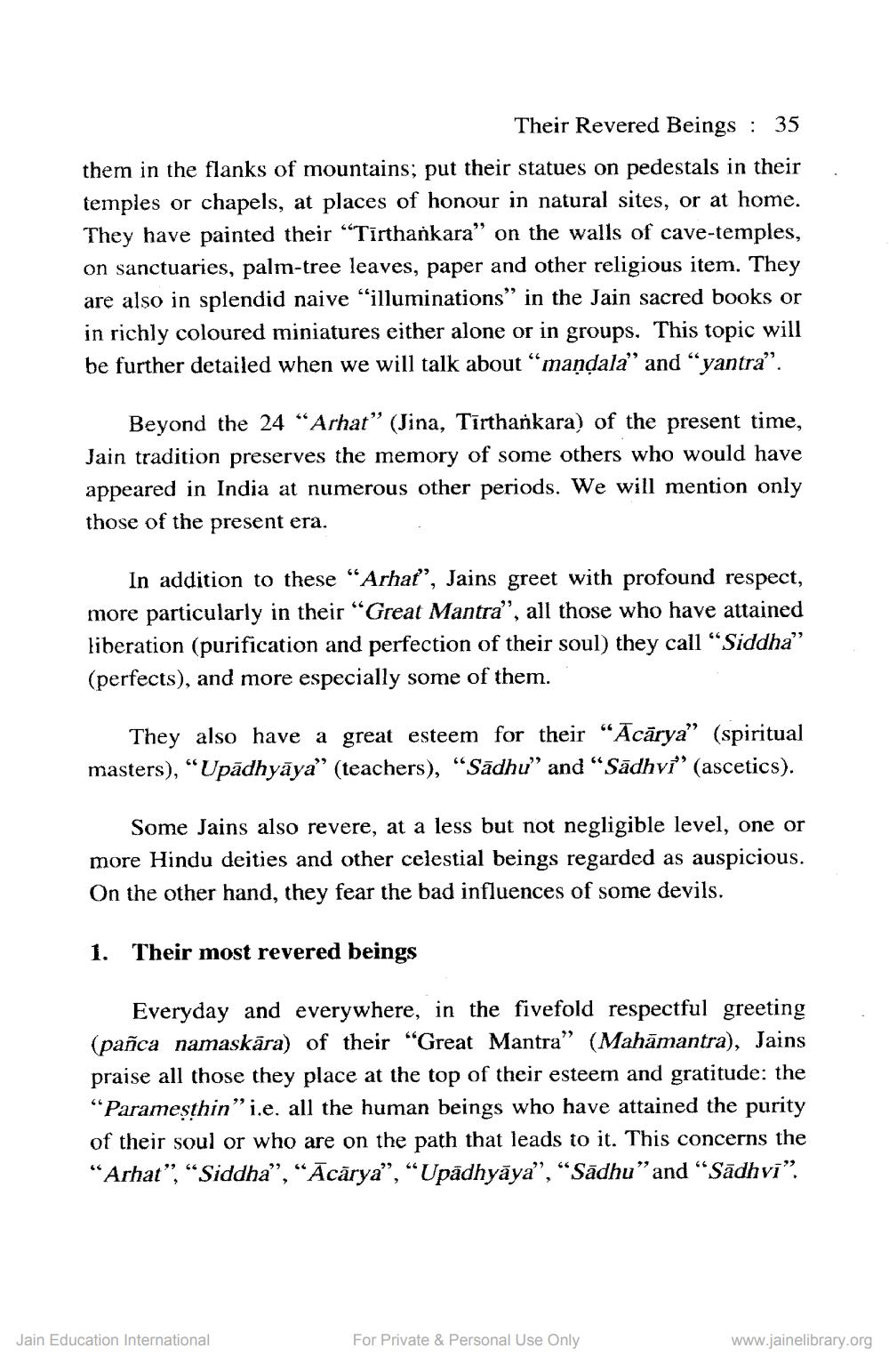________________
Their Revered Beings : 35 them in the flanks of mountains; put their statues on pedestals in their temples or chapels, at places of honour in natural sites, or at home. They have painted their "Tirthankara" on the walls of cave-temples, on sanctuaries, palm-tree leaves, paper and other religious item. They are also in splendid naive "illuminations" in the Jain sacred books or in richly coloured miniatures either alone or in groups. This topic will be further detailed when we will talk about “maṇḍala” and “yantra”.
Beyond the 24 "Arhat" (Jina, Tirthankara) of the present time, Jain tradition preserves the memory of some others who would have appeared in India at numerous other periods. We will mention only those of the present era.
In addition to these "Arhat", Jains greet with profound respect, more particularly in their "Great Mantra", all those who have attained liberation (purification and perfection of their soul) they call "Siddha" (perfects), and more especially some of them.
They also have a great esteem for their "Acarya" (spiritual masters), "Upadhyaya" (teachers), "Sadhu" and "Sadhvi" (ascetics).
Some Jains also revere, at a less but not negligible level, one or more Hindu deities and other celestial beings regarded as auspicious. On the other hand, they fear the bad influences of some devils.
1. Their most revered beings
Everyday and everywhere, in the fivefold respectful greeting (pañca namaskara) of their "Great Mantra" (Mahamantra), Jains praise all those they place at the top of their esteem and gratitude: the "Parameṣthin" i.e. all the human beings who have attained the purity of their soul or who are on the path that leads to it. This concerns the "Arhat", "Siddha", "Acarya", "Upadhyaya", "Sadhu" and "Sadhvi".
Jain Education International
For Private & Personal Use Only
www.jainelibrary.org




